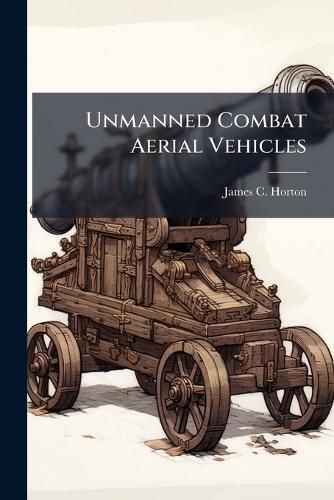Readings Newsletter
Become a Readings Member to make your shopping experience even easier.
Sign in or sign up for free!
You’re not far away from qualifying for FREE standard shipping within Australia
You’ve qualified for FREE standard shipping within Australia
The cart is loading…






With the success of Unmanned Aerial Vehicles (UAV) in Operations Allied Force, Enduring Freedom, and Iraqi Freedom, many in Congress and DoD are pushing to put more UAV capability on the battlefield of tomorrow. More importantly, the desire is to have these UAVs shift from reconnaissance to offensive combat platforms commonly referred to as UCAVs (Unmanned Combat Aerial Vehicles). UCAV's first mission is Suppression of Enemy Air Defenses (SEAD) and its complementary mission of Electronic Warfare (EW) sometimes referred to as jamming. Early support for these particular missions can be traced to a couple of factors. The first is the need to supplement and eventually replace the current Low Density/High Demand (LD/HD) manned systems such as the F-16CJ for SEAD and the EA-6B for EW. While these assets are limited in quantity, they are also artificially limited in employment capability due to concern for the aircrew in the dangerous environment in which they are forced to operate. This paper investigates the UCAV alternatives, to include sensor and weapon technology, and then recommends a course of action. The challenges of making a UCAV that can do the same job as a manned aircraft cheaper and more effectively will be the key drivers in deciding whether this is the right direction.
This work has been selected by scholars as being culturally important, and is part of the knowledge base of civilization as we know it. This work was reproduced from the original artifact, and remains as true to the original work as possible. Therefore, you will see the original copyright references, library stamps (as most of these works have been housed in our most important libraries around the world), and other notations in the work.
This work is in the public domain in the United States of America, and possibly other nations. Within the United States, you may freely copy and distribute this work, as no entity (individual or corporate) has a copyright on the body of the work.
As a reproduction of a historical artifact, this work may contain missing or blurred pages, poor pictures, errant marks, etc. Scholars believe, and we concur, that this work is important enough to be preserved, reproduced, and made generally available to the public. We appreciate your support of the preservation process, and thank you for being an important part of keeping this knowledge alive and relevant.
$9.00 standard shipping within Australia
FREE standard shipping within Australia for orders over $100.00
Express & International shipping calculated at checkout
With the success of Unmanned Aerial Vehicles (UAV) in Operations Allied Force, Enduring Freedom, and Iraqi Freedom, many in Congress and DoD are pushing to put more UAV capability on the battlefield of tomorrow. More importantly, the desire is to have these UAVs shift from reconnaissance to offensive combat platforms commonly referred to as UCAVs (Unmanned Combat Aerial Vehicles). UCAV's first mission is Suppression of Enemy Air Defenses (SEAD) and its complementary mission of Electronic Warfare (EW) sometimes referred to as jamming. Early support for these particular missions can be traced to a couple of factors. The first is the need to supplement and eventually replace the current Low Density/High Demand (LD/HD) manned systems such as the F-16CJ for SEAD and the EA-6B for EW. While these assets are limited in quantity, they are also artificially limited in employment capability due to concern for the aircrew in the dangerous environment in which they are forced to operate. This paper investigates the UCAV alternatives, to include sensor and weapon technology, and then recommends a course of action. The challenges of making a UCAV that can do the same job as a manned aircraft cheaper and more effectively will be the key drivers in deciding whether this is the right direction.
This work has been selected by scholars as being culturally important, and is part of the knowledge base of civilization as we know it. This work was reproduced from the original artifact, and remains as true to the original work as possible. Therefore, you will see the original copyright references, library stamps (as most of these works have been housed in our most important libraries around the world), and other notations in the work.
This work is in the public domain in the United States of America, and possibly other nations. Within the United States, you may freely copy and distribute this work, as no entity (individual or corporate) has a copyright on the body of the work.
As a reproduction of a historical artifact, this work may contain missing or blurred pages, poor pictures, errant marks, etc. Scholars believe, and we concur, that this work is important enough to be preserved, reproduced, and made generally available to the public. We appreciate your support of the preservation process, and thank you for being an important part of keeping this knowledge alive and relevant.